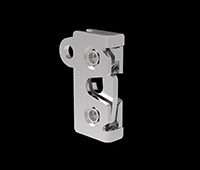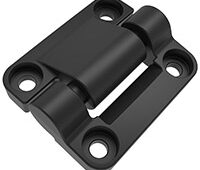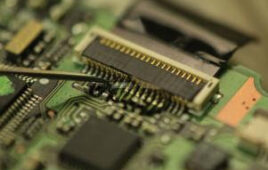Reell torque inserts introduce a new category of torque control hinges delivering exceptional pivoting capabilities without the standard appearance of conventional hinges. Depending on model, the torque inserts uniquely press-fit into a variety of materials via a keyed cavity or can be plastic over-molded. Their elimination of hardware for installation contributes to savings in time and costs and ultimately promotes enhanced cosmetics for assemblies. The torque inserts ideally suit a wide range of equipment and component applications in the consumer electronics, automotive, medical and dental, and architectural lighting industries, among many others.
The torque inserts additionally benefit from patented ReellTorq clip technology, which eliminates any need for adjustment and imparts a premium quality feel, smooth and precise position control, and consistent torque over their service life.

The TI-100 Series features a glass-filled nylon package configuration with 360º of rotation. These can be pressed into keyed cavities in a variety of die cast or extruded metals or molded plastics and will provide equal torque in both directions. Available torque ranges are 0.2 Nm to 1.2 Nm (1.8 lb-in to 10.6 lb-in) and 1.4 Nm to 4.2 Nm (12.4 lb-in to 37.2 lb-in).
The TI-200 Series incorporates a die-cast zinc housing with 360º of rotation and is designed to be plastic over-molded. These types generate full torque in one direction and 60 percent of the high torque in the opposite direction – allowing objects to be positioned easily with maximum support against gravity. Available torque ranges are 1.5 Nm to 3.5 Nm (13.3 lb-in to 31.0 lb-in) and 5 Nm to 8 Nm (44.3 lb-in to 70.8 lb-in).
Reell Precision Manufacturing
www.Reell.com
Filed Under: FASTENING • JOINING • locks • latches • pins





Tell Us What You Think!